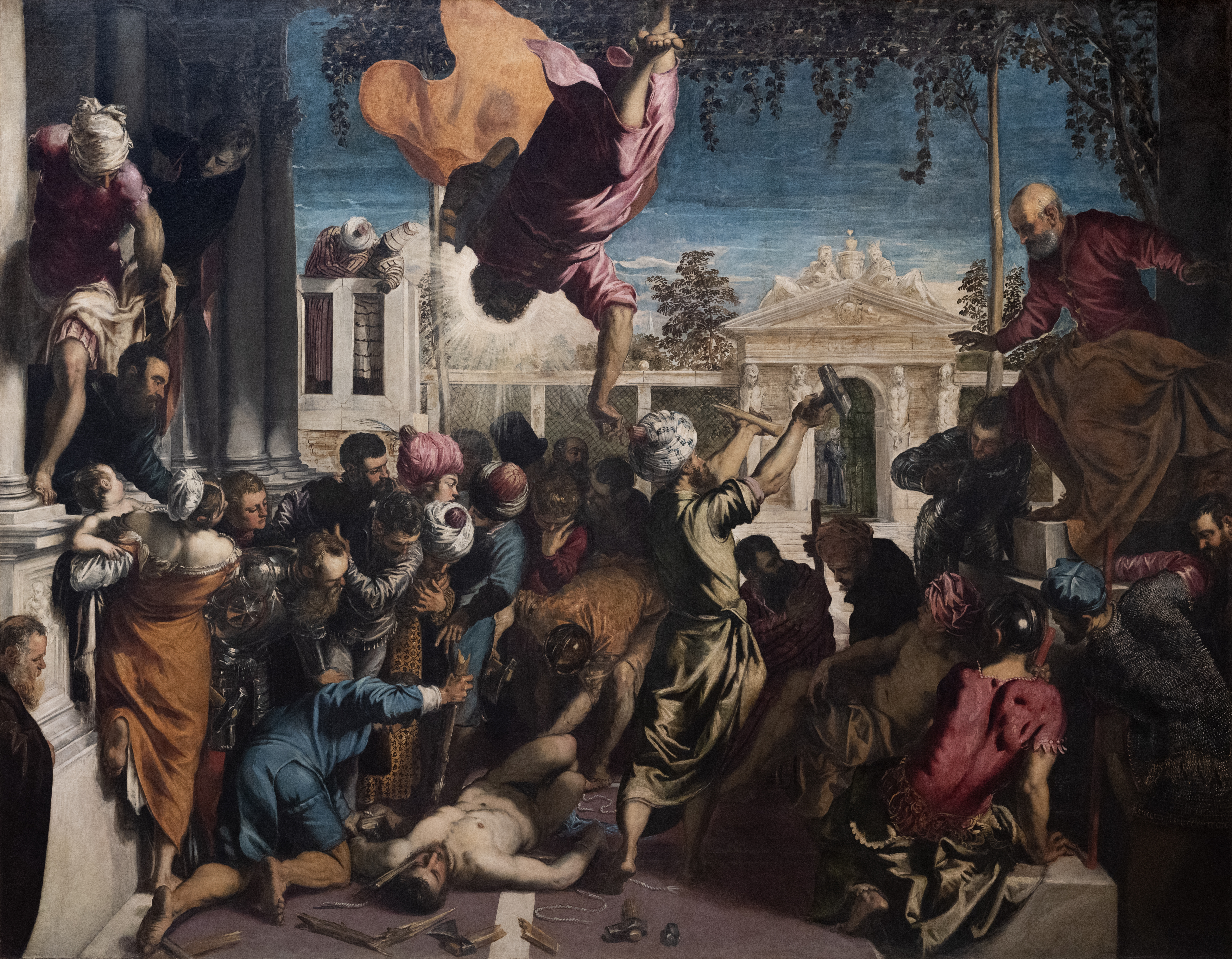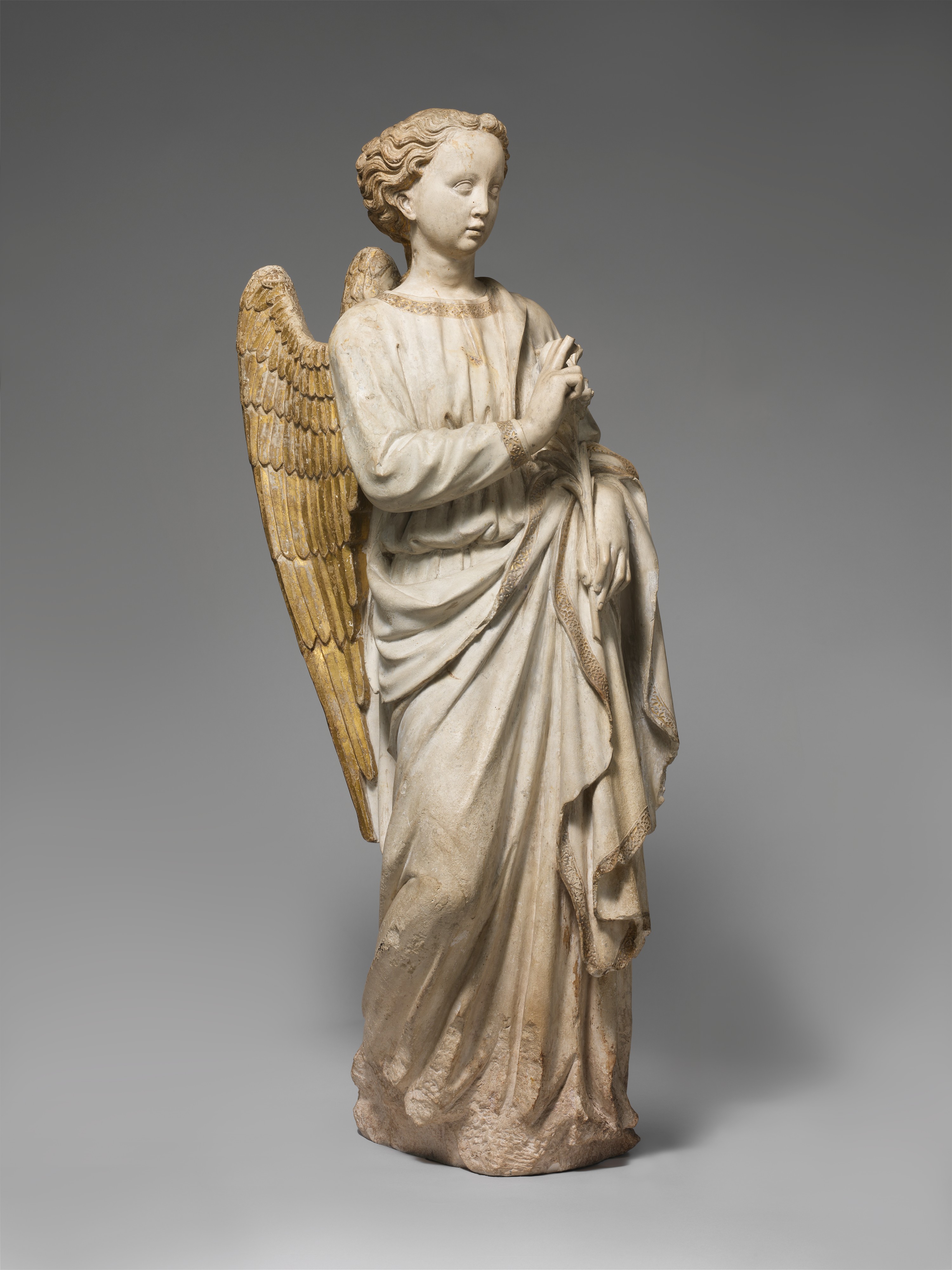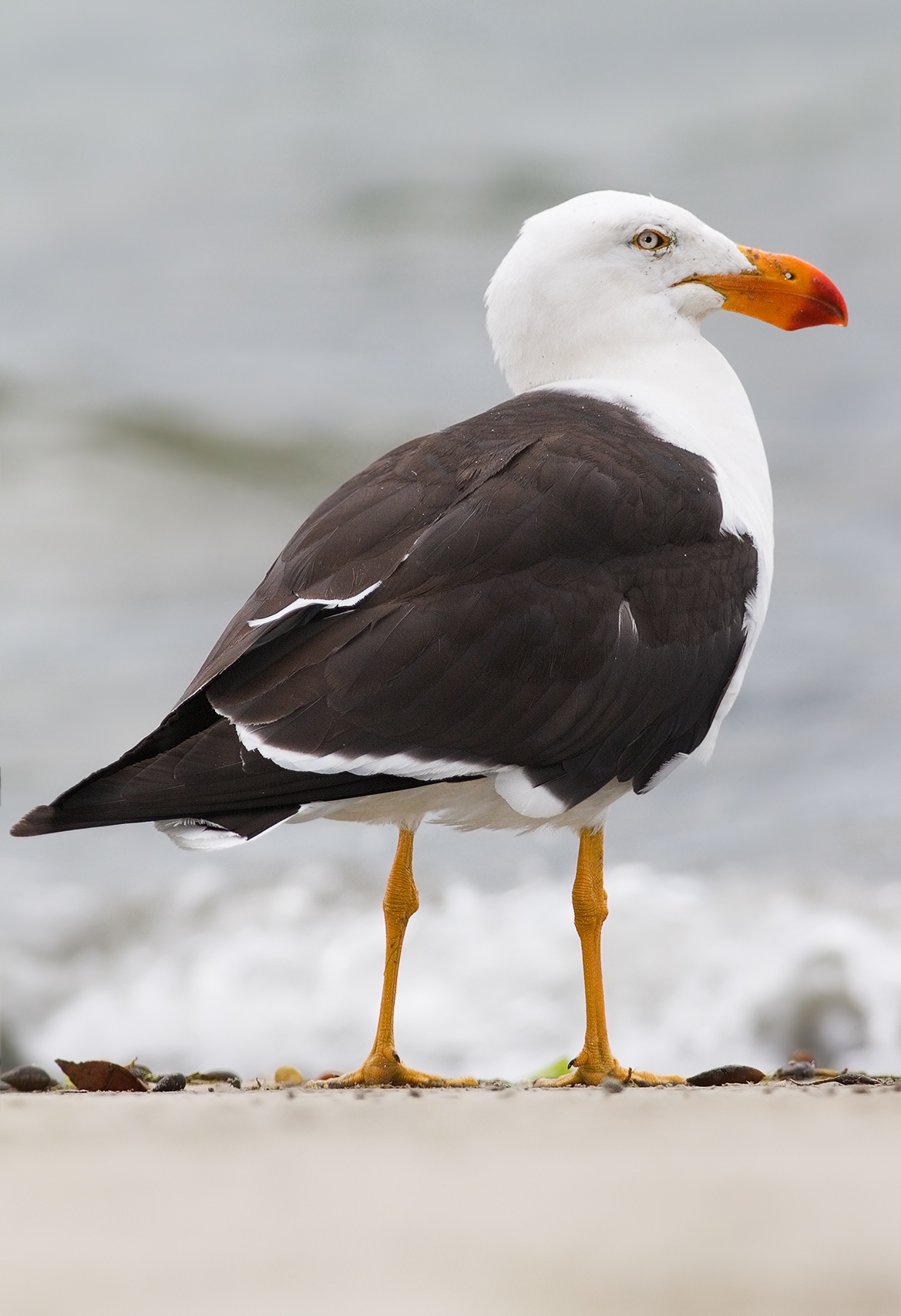|
Cenydd
Saint Cenydd (Modern ; ; century), sometimes anglicised as Saint Kenneth, was a Christian hermit on the Gower Peninsula in Wales, where he is credited with the foundation of the church at Llangennith. Legend Liturgical calendars and place-name evidence suggest the historical existence of Cenydd. His legend, however, is too late and too obviously derivative to be relied upon. According to Welsh sources collected in the 15th century by John Capgrave and published in the '' Nova Legenda Angliae'', Cenydd was a Breton prince, the son of "King Dihoc" (presumably Deroch II of Domnonée) by an allegedly incestuous relationship with his own daughter. While the poor girl was pregnant, Deroch was summoned by King Arthur to attend the Christmas festivities being held at his court in Aber Llychwr (Loughor). A cripple, Cenydd was placed in a cradle made of osiers and cast into the estuary of the River Loughor (a fate that befell several early British saints) and eventuall ... [...More Info...] [...Related Items...] OR: [Wikipedia] [Google] [Baidu] |
Llangennith
Llangennith () is a village in the City and County of Swansea, South Wales. It is located in the Gower. Moor Lane leads westwards to a caravan park near Rhossili Bay and Burrows Lane leads northwards to a caravan park overlooking Broughton Bay. The village has a scattering of houses, centred on St Cenydd's church, and the King's Head pub. History Llangennith clusters around a central village green and the church of Saint Cenydd (also Kyned/Cynydd) - the largest in Gower - which was founded in the 6th century, in the days of the undivided Church. According to legend, the church was established as a hermitage by St Cenydd; but in 986 the early buildings were destroyed by Vikings. The present structure dates from the 12th century - it was consecrated in 1102 - when Norman war-lords were building castles and churches all over Gower, as elsewhere in Britain. The large fortified square tower is unusually placed north of the nave in which is a filled in, low, eastern arch, lik ... [...More Info...] [...Related Items...] OR: [Wikipedia] [Google] [Baidu] |
List Of Welsh Saints
This list of Welsh saints includes Christian saints with Welsh connections, either because they were of Welsh origin and ethnicity or because they travelled to Wales from their own homeland and became noted in their hagiography for their work there. The pagan Celts of Britain had already been extensively Christianized during the Roman period: although only four victims of Diocletian's persecution are now known (Saints Alban, " Amphibalus", and Julius and Aaron), Britons met the pagan Saxon invaders largely as Christians prior to being driven back to Wales, Cornwall, and Brittany. The family of Vortigern, which continued to hold Powys in the early medieval period, produced numerous saints. Although they largely refrained from missionizing among the Germans, Welsh refugees and missionaries were responsible for the Christianization of Ireland and Brittany. The title of "saint" was used quite broadly in the Celtic churches. Extreme cases are Irish accounts of Gerald of Mayo's ... [...More Info...] [...Related Items...] OR: [Wikipedia] [Google] [Baidu] |
St Mungo's Church, Dearham
St Mungo's Church is in the village of Dearham, Cumbria, England. The church is dedicated to St Mungo, also known as Kentigern, the apostle of Strathclyde. It is an active Anglican parish church in the deanery of Solway, the archdeaconry of West Cumberland, and the diocese of Carlisle. The church is recorded in the National Heritage List for England as a designated Grade I listed building. History St Mungo's dates from the late 12th century, and the chancel was added in the 13th century. The architectural historian Nikolaus Pevsner was of the opinion that the Norman features, including the south door and some windows, date from about 1170–90, and that the tunnel vault in the lowest stage of the tower is also from this period or "a little later". The north aisle was added by C. J. Ferguson in 1882. Architecture Exterior The church is constructed in sandstone with green slate roofs. The foundations incorporate stones from former Roman buildings. ... [...More Info...] [...Related Items...] OR: [Wikipedia] [Google] [Baidu] |
Languidic
Languidic (; ) is a commune in the Morbihan department of Brittany in north-western France. History The local church was previously associated with the cult of the Welsh saint Cenydd (Kenneth). Geography Languidic, encompassing 10,908 hectares, is the most spread-out city in Morbihan and the third in Brittany. The river Ével forms part of the commune's north-eastern border, then flows into the Blavet, which forms its northern and north-western borders. Demographics Inhabitants of Languidic are called in French ''Languidiciens''. Breton language In 2008, there was 18,1% of the children attended the bilingual schools in primary education. ''Ofis ar Brezhoneg''''Enseignement bilingue''/ref> In 2013, there was 200 children in bilingual schools (primary education). Twinning Languidic is twinned with : * Great Cornard, England since 21 October 1989. * Rimpar, Germany since July 1997. See also *Communes of the Morbihan department The following is a list of the 249 Commun ... [...More Info...] [...Related Items...] OR: [Wikipedia] [Google] [Baidu] |
Saint Kenneth
Cainnech of Aghaboe (515/16–600), also known as Saint Canice in Ireland, Saint Kenneth in Scotland, Saint Kenny and in Latin Sanctus Canicus, was an Irish abbot, monastic founder, priest and missionary during the early medieval period. Cainnech is one of the Twelve Apostles of Ireland and preached Christianity across Ireland and to the Picts in Scotland. He wrote a commentary on the Gospels, which for centuries was known as the ''Glas-Choinnigh'' or ''Kenneth's Lock'' or the ''Chain of Cainnech''. Most of what is written about Cainnech's life is based on tradition, however he was considered a man of virtue, great eloquence and learning. His feast day is commemorated on 11 October in the Roman Catholic Church and the Eastern Orthodox Church according to their respective calendars (Gregorian or Church Julian) with additional feast days on 1st or 14 August in the Eastern Orthodox Church. Introduction A lot of what is known of Cainnech comes from legend. However, he is docum ... [...More Info...] [...Related Items...] OR: [Wikipedia] [Google] [Baidu] |
Incest
Incest ( ) is sexual intercourse, sex between kinship, close relatives, for example a brother, sister, or parent. This typically includes sexual activity between people in consanguinity (blood relations), and sometimes those related by lineage (anthropology), lineage. It is condemned and considered immoral in many societies. It can lead to an increased risk of genetic disorders in children in case of pregnancy from incestuous sex. The incest taboo is one of the most widespread of all cultural taboos, both in present and in past societies. Most modern societies have laws regarding incest or social restrictions on closely consanguineous marriages. In societies where it is illegal, consensual adult incest is seen by some as a victimless crime. Some cultures extend the incest taboo to relatives with no consanguinity, such as Milk kinship, milk-siblings, stepsiblings, and adoptive siblings, albeit sometimes with less intensity. Third-degree relatives (such as half-aunt, half-nephew ... [...More Info...] [...Related Items...] OR: [Wikipedia] [Google] [Baidu] |
Synod Of Brefi
The Synod of Brefi was a church council held at Llanddewi Brefi in Ceredigion, Wales, around 545. The synod was apparently called in order to condemn the heresy, heretical teachings of Pelagius (British monk), Pelagius. It was an important milestone in the rise of Saint David. It was Paulinus of Wales, Paulinus who advised Saint Dubricius, the senior bishop there, to invite David, a minor abbot, to the synod. David kept aloof from all temporal concerns and was initially reluctant to attend. St David's Church, Llanddewi Brefi is the site associated with St David's best known miracle, when, according to tradition, the ground rose up under his feet as he addressed the large crowd so that he could be heard better. According to legend, David's words were so eloquent that Dubricius retired in David's favour. One of his first duties was to consecrate Saint Deiniol as Bishop of Bangor. It is also said that the synod was called while Saint Cadoc, Abbot of Llancarfan Abbey, Llancarfan ... [...More Info...] [...Related Items...] OR: [Wikipedia] [Google] [Baidu] |
Saint David
David (; ; ) was a Welsh Christian prelate who served as Bishop of Mynyw during the 6th century. He is the patron saint of Wales. David was a native of Wales, and tradition has preserved a relatively large amount of detail about his life. His birth date, however, is uncertain: suggestions range from 462 to 512. He is traditionally believed to be the son of Non and the grandson of Ceredig ap Cunedda, king of Ceredigion. The Welsh annals placed his death 569 years after the birth of Christ, but Phillimore's dating revised this to 601. Hagiography Many of the traditional tales about David are found in the ''Buchedd Dewi'' ("Life of David"), a hagiography written by Rhygyfarch around 1090. Rhygyfarch claimed it was based on documents found in the cathedral archives. Modern historians are sceptical of some of its claims: one of Rhygyfarch's aims was to establish some independence for the Welsh church, which had refused the Roman rite until the 8th century and now sought a ... [...More Info...] [...Related Items...] OR: [Wikipedia] [Google] [Baidu] |
Miracle
A miracle is an event that is inexplicable by natural or scientific lawsOne dictionary define"Miracle"as: "A surprising and welcome event that is not explicable by natural or scientific laws and is therefore considered to be the work of a divine agency." and accordingly gets attributed to some supernatural or praeternatural cause. Various religions often attribute a phenomenon characterized as miraculous to the actions of a supernatural being, (especially) a deity, a miracle worker, a saint, or a religious leader. Informally, English-speakers often use the word ''miracle'' to characterise any beneficial event that is statistically unlikely but not contrary to the laws of nature, such as surviving a natural disaster, or simply a "wonderful" occurrence, regardless of likelihood (e.g. "the miracle of childbirth"). Some coincidences may be seen as miracles. A true miracle would, by definition, be a non-natural phenomenon, leading many writers to dismiss miracles as physically i ... [...More Info...] [...Related Items...] OR: [Wikipedia] [Google] [Baidu] |
Angel
An angel is a spiritual (without a physical body), heavenly, or supernatural being, usually humanoid with bird-like wings, often depicted as a messenger or intermediary between God (the transcendent) and humanity (the profane) in various traditions like the Abrahamic religions. Other roles include protectors and guides for humans, such as guardian angels and servants of God. In Western belief-systems the term is often used to distinguish benevolent from malevolent intermediary beings. Emphasizing the distance between God and mankind, revelation-based belief-systems require angels to bridge the gap between the earthly and the transcendent realm. Angels play a lesser role in monistic belief-systems, since the gap is non-existent. However, angelic beings might be conceived as aid to achieve a proper relationship with the divine. Abrahamic religions describe angelic hierarchies, which vary by religion and sect. Some angels have specific names (such as Gabriel or Mich ... [...More Info...] [...Related Items...] OR: [Wikipedia] [Google] [Baidu] |
Seagull
Gulls, or colloquially seagulls, are seabirds of the subfamily Larinae. They are most closely related to terns and skimmers, distantly related to auks, and even more distantly related to waders. Until the 21st century, most gulls were placed in the genus ''Larus'', but that arrangement is now considered polyphyletic, leading to the resurrection of several genera. An older name for gulls is mews; this still exists in certain regional English dialects and is cognate with German , Danish ', Swedish ', Dutch ', Norwegian ', and French '. Gulls are usually grey or white, often with black markings on the head or wings. They normally have harsh wailing or squawking calls, stout bills, and webbed feet. Most gulls are ground-nesting piscivores or carnivores which take live food or scavenge opportunistically, particularly the ''Larus'' species. Live food often includes crustaceans, molluscs, fish and small birds. Gulls have unhinging jaws that provide the flexibility to consume large pr ... [...More Info...] [...Related Items...] OR: [Wikipedia] [Google] [Baidu] |
Worm's Head
Worm's Head () is a headland, at Rhossili, part of the City and County of Swansea, Wales. It is the furthest westerly point of the Gower Peninsula. The name Worm's Head is derived from an Old English word 'wyrm' for 'sea serpent'. The headland of carboniferous limestone comprises three islands: the Inner Head, the Middle Head which features a collapsed sea cave which is known as the Devil's Bridge, and the Outer Head. In total, it is approximately one mile long. The Inner Head is up to 200 yards wide. Worm's Head is only accessible on foot for hours either side of low tide, fatal to attempt to wade or swim to when the causeway from the mainland is flooded. The poet Dylan Thomas Dylan Marlais Thomas (27 October 1914 – 9 November 1953) was a Welsh poet and writer, whose works include the poems " Do not go gentle into that good night" and " And death shall have no dominion", as well as the "play for voices" ''Un ... initially described the Worm's Head as "the very ... [...More Info...] [...Related Items...] OR: [Wikipedia] [Google] [Baidu] |





